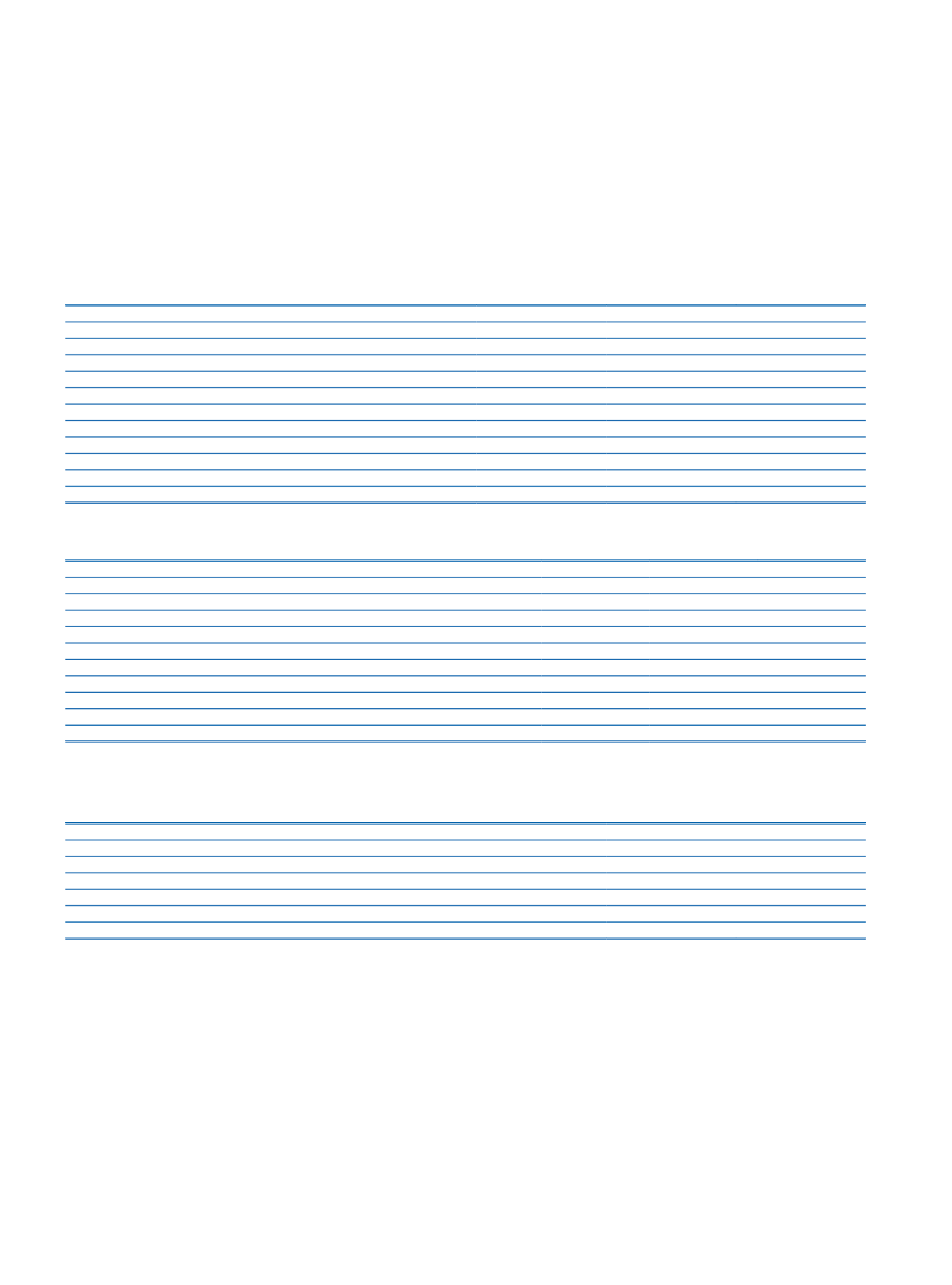
Türkiye İş Bankası A.Ş.
Notes to the Unconsolidated Financial Statements
for the Year Ended 31 December 2015
131
Financial Information and Risk Management
2. Information on fair value measurements recognized in the financial statements
“TFRS 13 - Fair Value Measurement” standard requires the items, which are recognized in the balance sheet at their fair values to be shown in the notes by being classified within
a range. According to this, the related financial instruments are classified into three levels in such a way that they will express the significance of the data used in fair value
measurements. At the first level, there are financial instruments, whose fair values are determined according to quoted prices in active markets for identical assets or liabilities, at the
second level, there are financial instruments, whose fair values are determined by directly or indirectly observable market data, and at the third level, there are financial instruments,
whose fair values are determined by the data, which are not based on observable market data. The financial assets, which are recognized in the balance sheet at their values, are
shown below as classified according to the aforementioned principles of ranking.
Current Period
Level 1
Level 2
Level 3
Financial Assets at Fair Value Through Profit and Loss
Debt Securities
227,266
9,062
36,290
Equity Securities
56,255
Derivative Financial Assets Held for Trading
1,263,425
Other
Financial Assets Available-for-Sale
(1)
Debt Securities
28,049,361
8,565,130
3,778,269
Equity Securities
255,353
Other
49,052
Investments in Subsidiaries and Associates
(2)
7,500,929
Derivative Financial Liabilities
927,974
(1)
Since they are not traded in an active market, the equity securities TL 163,195 under the financial assets available-for-sale are shown in the financial statements at acquisition cost and the related securities are not
shown in this table.
(2)
Since the unlisted investments in associates and subsidiaries are recognized at acquisition cost within the framework of “TAS 27”, these companies are not included in the table.
Prior Period
Level 1
Level 2
Level 3
Financial Assets at Fair Value Through Profit and Loss
Debt Securities
253,619
10,255
1,072
Equity Securities
Derivative Financial Assets Held for Trading
973,309
Other
Financial Assets Available-for-Sale
(1)
Debt Securities
32,029,800
6,315,820
744,601
Other
53,793
Investments in Subsidiaries and Associates
(2)
7,251,253
Derivative Financial Liabilities
630,151
(1)
Since they are not traded in an active market, the equity securities TL 145,947 under the financial assets available-for-sale are shown in the financial statements at acquisition cost and the related securities are not
shown in this table.
(2)
Since the unlisted investments in associates and subsidiaries are recognized at acquisition cost within the framework of TAS 27, these companies are not included in the table.
The movement table of financial assets at level 3 is given below.
Current Period
Prior Period
Balance at the Beginning of the Period
745,673
4,152,332
Purchases
39,716
53,576
Redemption or Sales
(58,307)
(513,800)
Valuation Difference
401,811
33,337
Transfers
2,941,019
(2,979,772)
Balance at the end of the Period
4,069,912
745,673
Real estates which are presented in the financial statements at fair value are classified at level 3.
XV. Explanations on Transactions Carried Out on Behalf of Third Parties and Fiduciary Transactions
The Bank gives trading, custody, fund management services in the name and on the account of its customers. The Bank has no fiduciary transactions.
XVI. Explanations on Segment Reporting
The Bank’s operations are classified as corporate, commercial, retail and private banking, and treasury/investment banking.
The Bank provides services to the large corporations, SMEs and other trading companies through various financial media within the course of its corporate and commercial operations.
Services such as project financing, operating and investment loans, deposit and cash management, credit cards, cheques and bills, foreign trade transactions and financing, letter
of guarantees, letter of credits, forfeiting, foreign currency trading, bill collections, payrolls, investment accounts, tax collections and other banking services are provided for the
aforementioned customer segments.
Retail banking services are comprised of individuals needs such as deposits, consumer loans, overdraft accounts, credit cards, bill collections, remittances, foreign currency trading,
safe-deposit boxes, insurance, tax collections, and investment accounts and by other banking services. Private banking category, are comprised of any kind of financial and cash
management related services provided for individuals within the high-income segment.
Treasury transactions are comprised of medium and long term funding tools such as securities trading, money market transactions, spot and forward TL and foreign currency trading,
and derivative transactions such as forwards, swaps, futures and options, as well as syndications and securitizations.
The Bank’s investments in associates and subsidiaries operating in the financial and non-financial sectors are evaluated within the context of investment banking. The details about
the aforementioned investments are stated in Note I.h-I.i of Section Five.


